The Xiaomi 12T Pro is big, powerful and ready to entertain, but some 2022 design downgrades, overheating issues and an over-reliance on an impressive-sounding-but-not-quite-killer 200-megapixel camera mean it’s not the best buy at £700. However, there’s still a lot to like here if you find the phone selling for less – deep discounts aren’t exactly rare for Xiaomi.
Pros
- Big, bright screen looks clear outdoors
- Powerful Snapdragon processor
- Very fast charging
Cons
- Unremarkable secondary cameras
- Disappointing low-light stills performance at this level
- Overheats under prolonged stress
- A design downgrade from 2021’s version
-
120W chargingThis phone has one of the most powerful charging standards in the world, as it’s able to reach almost twice the wattage of many laptops. It takes 25 minutes to get to 100%. -
Qualcomm Snapdragon 8+ Gen 1You get the tweaked version of the Snapdragon 8 Gen 1, which has a more advanced architecture to improve efficiency. -
200-megapixel cameraA Samsung 200-megapixel camera is a real headline-grabber, although it may not be quite as capable as it looks on paper.
Introduction
The Xiaomi 12T Pro is an upper mid-range phone. It has a very powerful processor from Qualcomm, a large screen and an eye-catching 200-megapixel camera.
This is a good entertainment phone, but I don’t think it is quite as appealing as its predecessor the Xiaomi 11T Pro. Its starting price is £150 higher, or £50 higher at the same storage capacity, and yet there’s a design downgrade – the use of plastic borders/sides.
The Xiaomi 12T Pro’s secondary cameras are unremarkable at best, and while the main 200-megapixel camera is good, its low-light results are slightly disappointing, considering how advanced the hardware seems on paper.
Gaming performance is excellent, and a large display is always a bonus for play. However, the phone failed a stress test, throwing up an overheating warning within 20 minutes.
The £699 Xiaomi 12T Pro doesn’t seem quite as strong on value as some other Xiaomi phones. But if you see it selling for a bit less than its original price, it’s a good buy. 120W charging in particular is a big win for solving potential battery headaches.
Design and Screen
- Plastic sides, unlike the previous model
- Gorilla Glass 5 screen protection
- A fairly large and heavy phone
The Xiaomi 12T Pro is a large phone. Its footprint is big, it’s quite thick and, at 205g, it’s heavy too. While this is nothing unusual for geek-friendly Xiaomi, it is perhaps a little disappointing that this phone’s stature is very similar to that of much cheaper Androids from the brand.
The difference here is that the Xiaomi 12T Pro has a Gorilla Glass 5 back, not a plastic one. While Xiaomi has made some fantastic cheap glass-backed phones – like the brilliant Xiaomi Redmi Note 10 Pro from 2021 – these days, you have to spend a bit more to get a premium build.
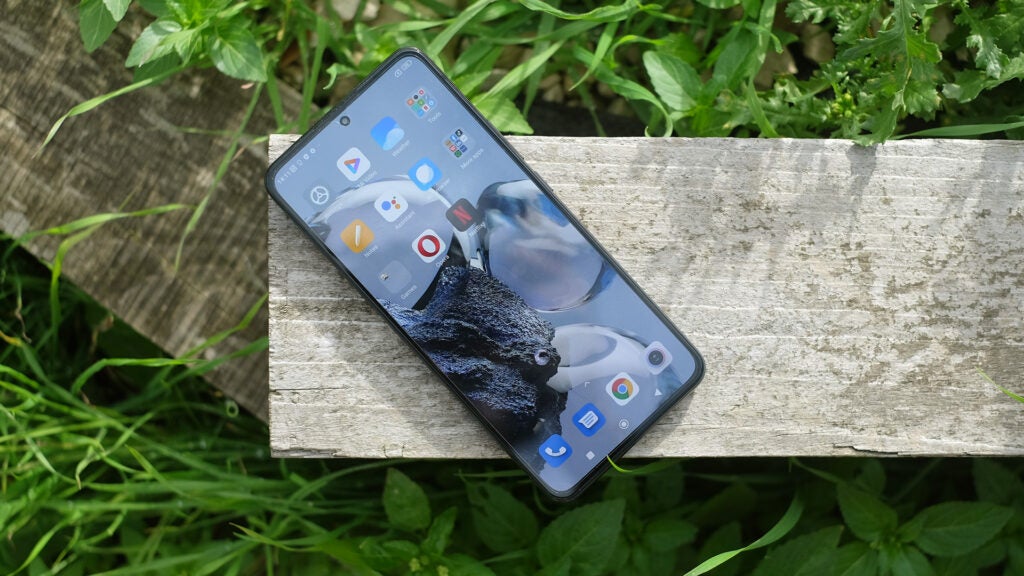
But there is actually a downgrade here, compared with both the Xiaomi 11T Pro and Xiaomi 12 Pro. Those phones have aluminium sides and Gorilla Glass Victus protection.
The glass steps down two rungs to Gorilla Glass 5 for the 12T Pro, and the sides are plastic, not metal. While the silk-finish curved glass on the back is lovely, the Xiaomi 12T Pro does not offer the true high-end feel of a Motorola Edge 30 Fusion.
This review can’t help but be influenced by some of the other phones I’ve used recently. For example, while the Xiaomi 12T Pro has good speakers, it’s a bit strange that the small Asus Zenfone 9 actually puts out significantly better bass. Lower frequencies tail off severely here, meaning you get mid-range quality and not the top-tier sound that surprises you by coming out of a phone-shaped box.
The Xiaomi 12T Pro lacks all the extras most phones this capable discard. There’s no microSD slot. There’s no headphone jack. And yet this thing still has an IR blaster, which lets it double as a universal remote control.
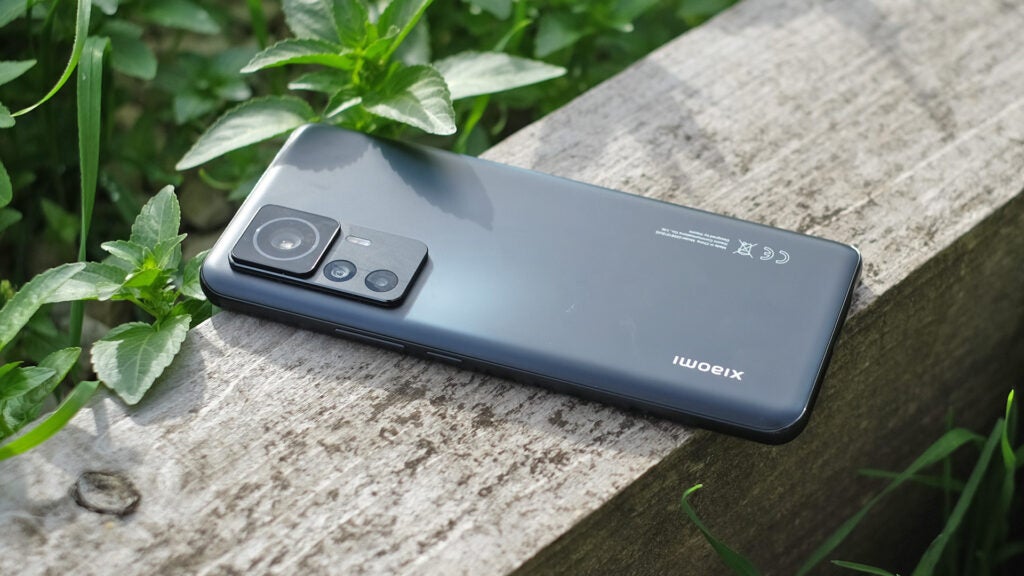
Other parts are a mix too. The Xiaomi 12T Pro has a good in-screen fingerprint scanner, but its water resistance is rated at a poor IP53. This means it’s not really made to cope with much more than rain.
I’ve been impressed by Xiaomi phones’ cash-to-build-quality ratios in the past. But here, the equation only just about makes sense.
The Xiaomi 12T Pro has a 6.67-inch OLED screen with a 120Hz refresh rate. Xiaomi has made loads of phones with this core spec, but the resolution on this one is a little bit odd.
Most mid-range Android phones of this style have roughly 2400 x 1080 pixel displays. The Xiaomi 12T Pro’s is a 2712 x 1220 pixel screen – significantly higher-res. I can’t say I noticed the difference until I looked into the phone’s specs, but a little extra pixel density is going to be useful when you get up close to the screen, or for folks who read books on their phones.
I don’t think resolution is a major battleground at the moment, even if this phone has an unusual edge over some of the competition. Brightness is, however, significant. The Xiaomi 12T Pro will reach 475 nits indoors and can go all the way up to 871 nits in bright sunlight.
There has been a lot of talk of 1300-nit brightness displays in the past couple of years, but in reality, lots of them only get to 600-odd nits. The Xiaomi 12T Pro is rated for 900 nits and here, for once, it basically hits that mark. You may be able to get higher readings than mine if you use a different colour mode.
I would have been blown away by the Xiaomi 12T Pro’s brightness for a mid-ranger, but I’ve recently used a couple of phones that get reasonably close to this one. Semi-affordable super-bright phones are a reality now. Still, this phone’s outdoor visibility is very good.
Colour is solid too. You can choose between Vivid, Saturated and Original Colour modes, or use the Advanced mode to pick an actual colour gamut – DCI-P3, old-school sRGB or the native colour of the panel.
Performance
- Quirky Xiaomi interface
- Very good peak performance
- Overheats following persistent stress
The Xiaomi 12T Pro is a very powerful phone that runs Android 12 and has Xiaomi’s custom interface up top. I’ve complained about this UI a bunch of times – and I’m going to have to again.
Xiaomi messes with the notifications drop-down and the gestures involved in basic navigation. To get between the features toggles and notifications screens, you have to flick left or right, not the usual up or down. It takes some getting used to, particularly when swiping the wrong way dismisses notifications rather than moving to the feature toggle screen.
The Xiaomi 12T Pro also has some pre-installed bloat, although at least some of it consists of apps you might use. There’s Genshin Impact, one of the more popular high-end Android games, Booking.com, Agoda and Amazon Shopping.
It may be annoying, but is not a great reason to discount the Xiaomi 12T Pro. General performance is great, and this is a very high-spec phone all round.
The Xiaomi 12T Pro’s 256GB storage reads at 1455MB/s, writes at 645MB/s, and the 8GB RAM is nippy LPDDR5.
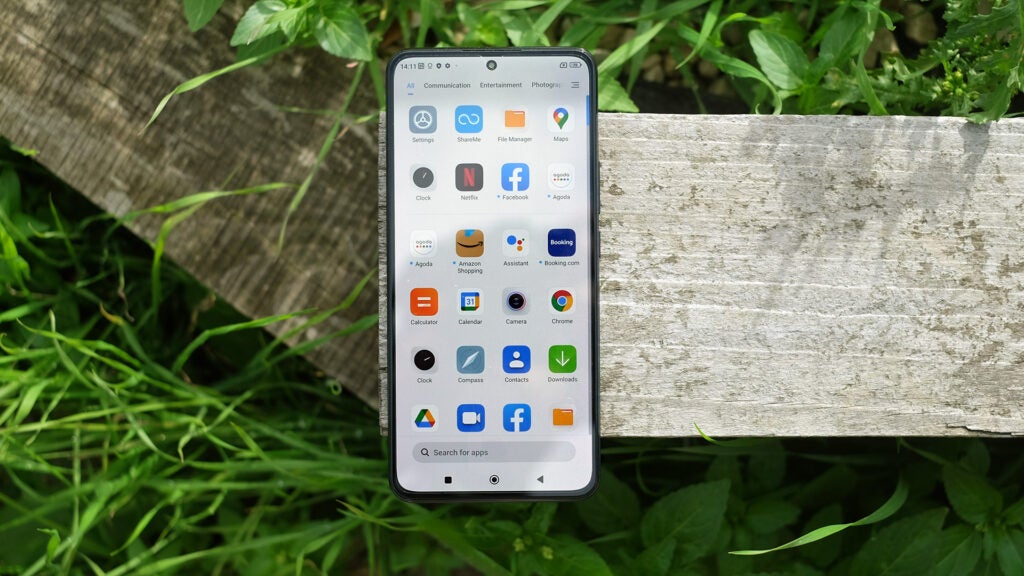
Its processor is the Qualcomm Snapdragon 8 Plus Gen 1, which is about the best you can get in an Android phone at the time of review. However, there are some problems.
This “Plus” version of the processor has, in other phones, solved my main issue with the original Snapdragon 8 Gen 1, that it has to throttle performance massively due to heat build-up. That does not seem to have happened here.
I use 3DMark’s Wild Life stress test to see how phone performance is affected by heat build-up. The Xiaomi 12T Pro failed this 20-minute test twice, starting at standard room temperature. An overheating pop-up appeared: game over.
I also tried cooling the phone down to bring down its starting temperature. The Xiaomi 12T Pro finally made it, with surprising results. 3DMark reported very little performance throttling, with the lowest score being 93% of the highest. Asus’s Zenfone 9 lost almost 40% performance. There’s an unwillingness to compromise on performance here.
However, all in all, I don’t think this is actually a great result. If your phone shuts down apps rather than dropping performance a bit, something has gone wrong. Peak performance is excellent, however, and top-end games like Fortnite run very well. The latter lets you use the highest graphical settings and the 90fps mode only available on selected handsets.
The Xiaomi 12T Pro has 256GB storage too – plenty of room for data-sapping games.
Camera
- High-spec 200-megapixel main camera
- Relatively weak secondary cameras
- Night photos are disappointingly mushy
The Xiaomi 12T Pro camera is not what it first appears to be. It has a 200-megapixel primary camera, so the array must be a highlight, right? Not quite.
This is a Samsung sensor that, while decent, is not a leader in this mid-range category. And the secondary cameras are not very good. These are an 8-megapixel ultra-wide and a 2-megapixel macro.
A bit like the very limited water resistance, the Xiaomi 12T Pro’s secondary cameras do not seem to have been granted that much of the phone’s budget. The ultra-wide is passable, able to take decent pics, but the macro is bad. This is only a potential issue as at £700 the phone is not cheap, being in the Pixel 7/7 Pro territory.
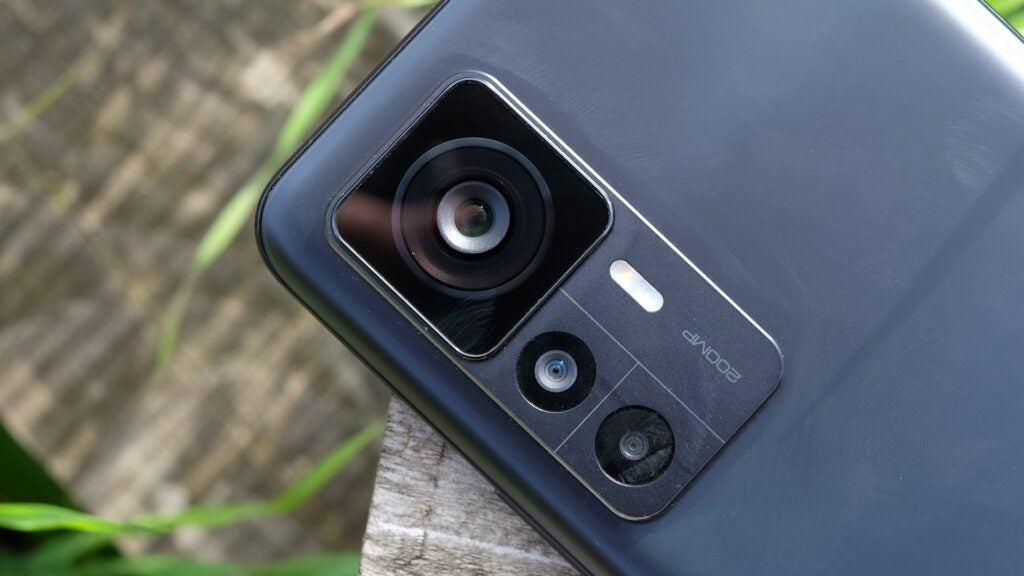
The Xiaomi 12T Pro’s primary camera is a 200-megapixel Samsung HP1. It’s a large 1/1.22-inch sensor, but the sensor pixels are very tiny 0.64-micron blocks. As standard, the phone captures 12-megapixel images, just using the massive megapixel count to turbocharge pixel binning.
Xiaomi does not give digital zoom any special positioning here either. While you can manually zoom up to 10x, 2x is the one preset in the app.
This is a solid mid-range camera, but I don’t think it is as far ahead of some of Xiaomi’s £300-£400 phones as it should be. And in some situations, it is clearly outperformed by Sony IMX766 hardware phones, such as the OnePlus Nord 2T.
But let’s start with the good bits. The Xiaomi 12T Pro does a good job with the character of its fine detail rendering. There’s none of that painted-looking effect when you zoom right into the pixels.
The high megapixel count also leads to good results when using the digital zoom, making — for example — faraway brickwork clear at 2x or beyond, when it is largely invisible in the standard 1x pic. There are also 50-megapixel and 200-megapixel modes that let you see this sort of detail with a normal field of view.

Xiaomi’s 200MP mode is interesting in particular. There seems to be very little noise reduction going on in it, but the detail rendering can be excellent in a well-lit scene.
However, it’s not perfect. Looking back over the few hundred frames captured with the Xiaomi 12T Pro, it tends to lean towards slightly cool-looking tones. Many of the pictures just don’t look as inviting as those taken with the Motorola Edge 30 Fusion, and the ultra-wide pics often have a more appealing colour.
Match coolness with a tendency to occasionally amp up the blues of skies too much, and some of the 12T Pro photos end up looking a little odd. As you can see in my sample images, this is very much dependent on the scene, but I did not use the AI scene mode in any of these cases – just standard Auto shooting.







The Xiaomi 12T Pro’s night images are not competitive at £700 either. At this price, I’d expect to see good results using Auto shooting, with the dedicated Night mode there if you’re happy for the scene to diverge even further from how it looks to the naked eye.
Here, Auto night shooting is pretty poor. Dark scenes stay dark and also look quite soft. The Night mode improves dynamic range and colour significantly, but smaller details and textures end up looking very mushy and soft. This wouldn’t be too bad a result if the phone were £369, but it costs a lot more than that.

If extreme pixel binning doesn’t lead to great low-light results, what are all those pixels for? Granted, it can take better 8-10x digital zoom images than the 50-megapixel Motorola Edge 30 Fusion. However, it’s not a real replacement for a decent optical 3x lens.
There are few complaints to be made about the Xiaomi 12T Pro’s video – it’s generally great. You can shoot at up to 8K resolution, and even this mode has a minimal amount of stabilisation to make your footage look OK. However, as the maximum frame rate is 24fps, I think most people should stick to 4K/60, which looks excellent. It’s clean, it’s nicely stabilised, and the colour is sound.
It is already smooth enough to make handheld footage look professional, but the Xiaomi 12T Pro also has a super-smooth mode for action-camera-like results. It’s limited to 1080p/30, though.
The phone’s front camera uses a 20-megapixel Sony IMX596, as seen in the Poco F4 GT. It handles backlit scenes well and detail is good in brighter lighting. While fine details can look a little fuzzy in lower light, image quality still holds up very well even as the ISO sensitivity goes to 2200 and beyond.
Battery life
- Battery life is OK but unremarkable
- Fast 120W charging
- Takes under 30 minutes to recharge
Xiaomi has made countless phones with the same display size and battery capacity as the Xiaomi 12T Pro. It has a 5000mAh battery, the standard size for a phone of this scale.
Its battery life is unsurprisingly familiar. I typically end up with about 20% charge left by the end of the day. There’s enough of a buffer to stop you from needing to top up before a night out every single time, but this is not a notably long-lasting phone. Oddly enough, I find the non-Pro Xiaomi 12T tends to last a bit longer, based on my personal usage patterns. It has a MediaTek processor but the same battery capacity.
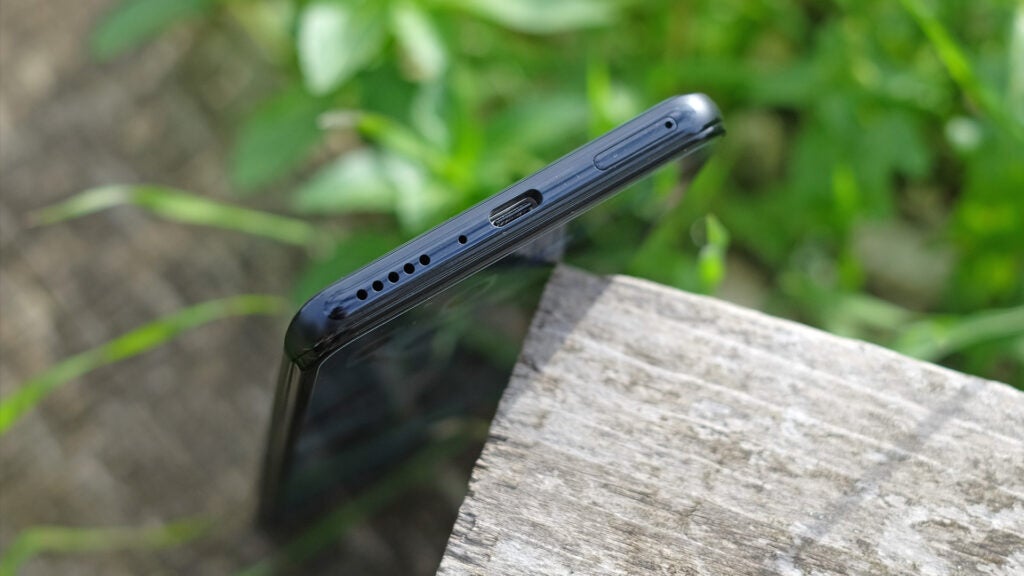
The Xiaomi 12T Pro does have very fast charging, however. It includes a 120W charger and actually hits that power draw according to my power meter. It reached 100% charge after 25mins and stopped drawing power at the 28-min mark.
The phone gets to 50% in roughly 11mins30secs. And you can take a couple of minutes off all of these figures if you don’t start charging from a completely dead state. It took the phone 3mins to reach 60W because – like many phones – the Xiaomi 12T Pro takes things low and slow when starting from a flat state.
Should you buy it?
Big screen, powerful processor, bright display panel, and stereo speakers – the Xiaomi 12T Pro has all the critical elements you should look for in a phone made for entertainment.
This phone is not as high on value as some older Xiaomi models, with only a semi-premium build style and fairly low-quality secondary cameras. Xiaomi’s performance tuning also runs into overheating issues in certain situations.
Final Thoughts
The Xiaomi 12T Pro is not as appealing a phone as its predecessor the Xiaomi 11T Pro. It looks and feels quite similar to some older mobiles in the sub-£500 category (some well below that figure, too) but costs £700.
Its impressive-sounding 200-megapixel camera doesn’t really belong in the big leagues either. While lots of megapixels are a boost for digital zoom, low-light performance doesn’t quite cut it at the price – even if you can take decent night photos.
The counterargument is that this is not a camera-led phone – it’s all about performance. However, the heat management here is a bit off, as the phone overheated multiple times over a 20-minute stress test. The Xiaomi 12T Pro is still a great entertainment phone, but you might want to wait until it dips below its initial asking price.
FAQs
There’s no wireless charging feature in the Xiaomi 12T Pro.
The phone has IP53 water resistance, which is rather weak protection for a higher-end phone. It is not significantly water-resistant.
There’s no headphone jack, so you will have to use an adapter for wired headphones.
Sustainability
TrustedReviews holds the fact that global warming is not a myth as a core value and will continuously endeavour to help protect our planet from harm in its business practices.
As part of this mission, whenever we review a product, we send the company a series of questions to help us gauge and make transparent the impact the device has on the environment.
We currently haven’t received answers to the questions on this product, but we will update this page the moment we do. You can see a detailed breakdown of the questions we ask and why in our sustainability info page.
Jargon buster
IP rating
An abbreviation for ‘Ingress Protection Code’, which lets you know to what extent a device might be waterproof or dustproof.
















